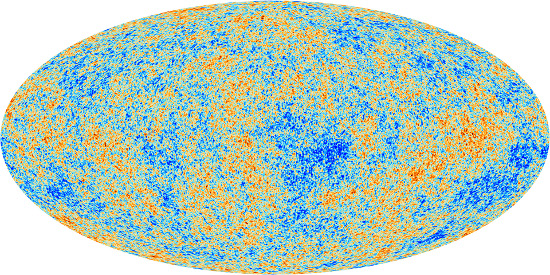There is no doubt that progress in physics and astronomy in the past century has been phenomenal. From the tiny matter particles (such as quarks, electrons, neutrinos) of the so-called "Standard Model" and the associated force-carrying bosons (such as photons, gluons, W, Z), to the cosmic microwave background and the vast, accelerating universe, physicists and astronomers have come together to explore an astonishing range of cosmic phenomena. When you think about the fact that the atomic nucleus was only discovered in 1911, and that only in 1924 astronomer Edwin Hubble confirmed that galaxies existed beyond our own Milky Way, you cannot avoid being amazed. The latest journeys into the largest and smallest scales have continued to produce spectacular results. On one hand is the discovery of the Higgs boson -- the particle that endows elementary particles with mass -- at the Large Hadron Collider (Figure 1). On the other, are the highly detailed observations of the cosmic microwave background--the afterglow of the Big Bang -- by the Planck satellite (Figure 2).

Figure 1. Simulated data showing the production of the Higgs boson from the collision of two protons. The Higgs decays into two jets of heavy particles and two electrons. Credit: CERN.

Figure 2. The Cosmic Microwave Background as observed by the Planck Satellite. Credit: ESA and the Planck Collaboration.
One may wonder which crucial questions will almost certainly occupy physicists and astronomers working together in the coming few decades. Here are a few of the remaining puzzles.
The first three questions that probably are at the top of the list (in no particular order) of both cosmologists and particle physicists are: (i) What is the nature of the "Dark Energy" that is propelling the acceleration of the cosmic expansion? (ii) What are the particle constituents of the "Dark Matter" that is holding galaxies and clusters of galaxies together? and (iii) Did our universe truly undergo the phase of stupendous expansion known as "inflation" when it was only a tiny fraction of a second old? To answer these questions in full will require a complex combination of high-precision astronomical observations with results from accelerator and laboratory experiments, coupled with theoretical advances. On the astronomical side, observations of large-scale structure and of supernovae with facilities such as the upcoming James Webb Space Telescope, and with wide-field imagers in space such as the planned WFIRST, and the next generation of cosmic microwave background telescopes, will work hand-in-hand with large telescopes on the ground (such as LSST). On the physics side, the Large Hadron Collider working at its full energy, together with an entire array of experiments searching for dark matter (known by acronyms such as SuperCDMS, LUX, COUPP-60, and others), will hopefully bring about a breakthrough.
Two other fascinating areas in which the interests of astronomers and high-energy physicists coalesce are related to the possibility of our universe containing extra spatial dimensions, and the formulation of a quantum theory of gravity. Various versions of string theory (or M-theory)--the attempt to unify all the forces of nature, as well as to explain the relative weakness of the gravitational force--assume the existence of more than the three dimensions of space (and one of time) that we are familiar with in our everyday lives. Accelerator experiments demonstrating some missing energy (because energy could escape into extra dimensions) or laboratory tests of the behavior of gravity on very short distance scales (predicted to vary if extra dimensions exist) can test some of the predictions of such theories.
Finally, another area likely to draw considerable attention is the physics of black holes. Here, a combination of x-ray observations, which are expected to be capable of resolving the innermost parts of disks accreting x-ray emitting gas onto black holes, together with ambitious attempts to detect gravitation radiation (such as Advanced LIGO and LISA), can bring about significant progress.
One thing is clear; there is no shortage of fascinating topics for physicists and astronomers to sink their teeth into.